Science
Reusing Recyclables: 10 Science Tools to Make for StudentsMay 22, 2024

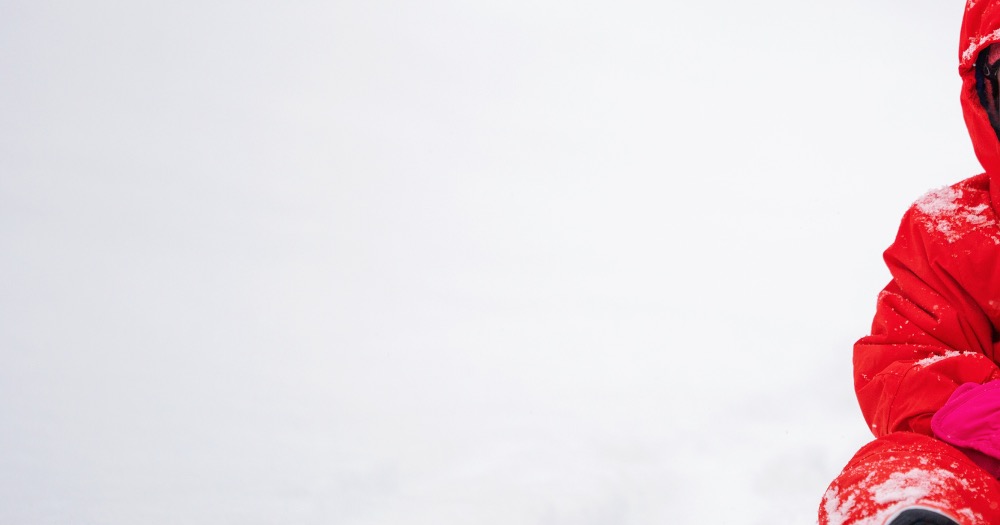
Nothing says winter like reading The Snowy Day Ezra Jack Keats. If you are itching to read this Caldecott winning story in your classroom but you’re not sure what activities to do alongside it, I’ve got you covered! Included in this article are 15 fun activities for early childhood learners that are related to the text and pictures from The Snowy Day Ezra Jack Keats.
If you’re unfamiliar with the book The Snowy Day Ezra Jack Keats, or you just need a refresher, the story follows a young boy named Peter waking up to a fresh blanket of snow outside his window in the city. He gets dressed and runs out into the snow. As he walks in the snow it makes noise and he adjusts his feet so that they make different patterned tracks in the snow. He then finds a stick and smacks a snow covered tree.
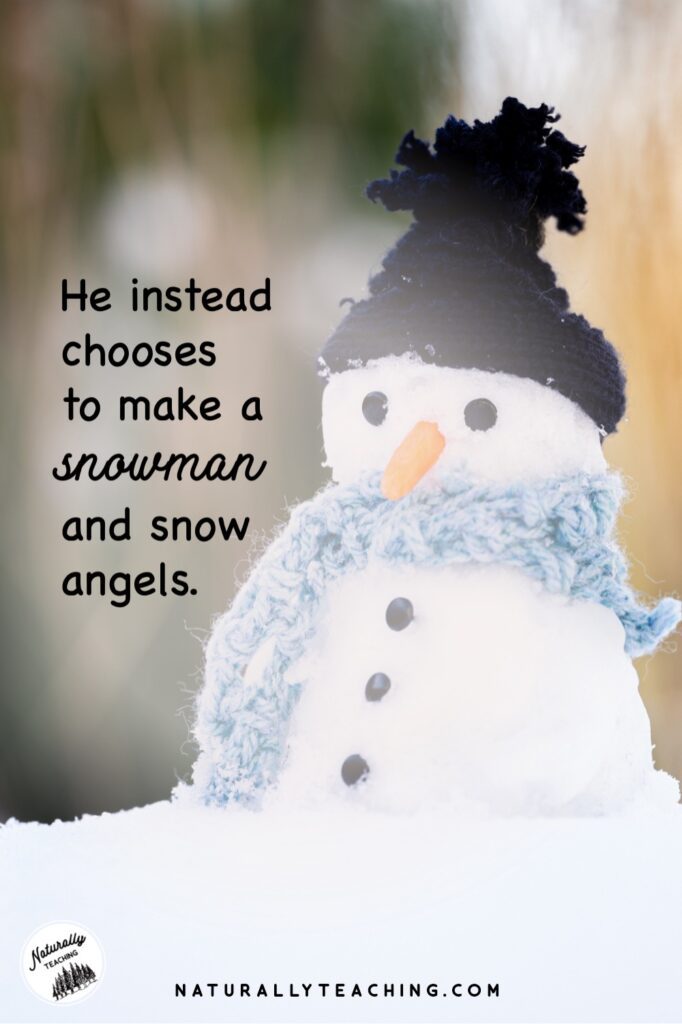
Peter comes across some older boys that are having a snowball fight but decides that he is too young to join them. He instead chooses to make a snowman and snow angels. Then he climbs up a large pile of snow and slides down the other side. He doesn’t want his fun to end so he packs a snowball and puts it in his pocket for later. Then he goes inside, takes off his winter clothes, and takes a bath. He checks on his snowball before he lays down for bed but it has melted. In his dreams that night, the sun melts the snow away. But when he wakes up he finds that it is still snowing and he and his friend go outside to play.
This book was written and illustrated by Ezra Jack Keats in 1962. It was awarded the 1963 Caldecott Medal and has been noted as the first picture book to have a black child as the main character. With it being published during the Civil Rights Movement, this book has been credited as one of the most important picture books ever written, helping break down barriers of race. Keats once said that he wanted his book to “lead all children to genuine self-acceptance” (Pinkney, 2021).
Keats was intentional about the urban setting of the book and the experiences Peter had because he “…wanted to make sure [he] didn’t make Peter a white kid colored brown” (Pinkney, 2021). While he was intentional about staying true to Peter’s perceived background, he also wanted his “…experiences – in play, imagination, feelings, and friendship – [to be] shared by all children” (Basil, n.d). All of these principles make this a wonderful book to include in your early childhood classrooms during the winter season.
The Snowy Day Ezra Jack Keats lends itself to several different types of activities. There are many wonderful ways you can celebrate this story through reading, writing, science, and art activities. Read on to discover activities paired with the Headstart Early Learning Outcomes Framework for Preschool and ELA Common Core State Standards and Next Generation Science Standards for grades Kindergarten through 2nd grade.
Looking for activities for The Snowy Day Ezra Jack Keats for a specific early childhood grade level? Click these links to jump to your desired grade.
Preschool is an amazing time filled with tremendous growth and learning. This learning should look different from a typical elementary classroom since preschoolers learn in a very hands-on and play-based way. Included in this section, The Snowy Day activities for preschool, are activities for literacy, gross motor development, and fine motor development inspired by The Snowy Day and tied to the Headstart Early Learning Outcomes Framework.
Prepare for this activity by making props to represent Peter and the different activities he does in the snow. Hide these around your classroom, in your play yard, or along the sidewalk or trails if you are able to use those spaces.
After you have prepped for the lesson and read aloud The Snowy Day Ezra Jack Keats, talk about the different elements of the story as a whole group. Talk about the main character Peter and the different activities that he experiences in the snow. Then, go for a walk around the space that you hid the props telling your students to keep an eye out for objects that remind them of the story. Pick up the props as you find them. When you collect all of the objects, work together as a group to put the props in order to retell the story.
After you have read aloud The Snowy Day, go back to pages 10 and 11 where Peter walks with his toes pointed in and out to make different tracks. Show the illustrations to your students and point out the different ways that Peter walked. Get your preschoolers bundled up in their outdoor gear and go for a walk in the snow playing a variation of follow the leader. Using their gross motor skills, have your students walk in the snow tracks of the person in front of them. The leader can change up the way they walk to make their tracks more interesting to follow. Make sure to give each child a chance to be the leader.
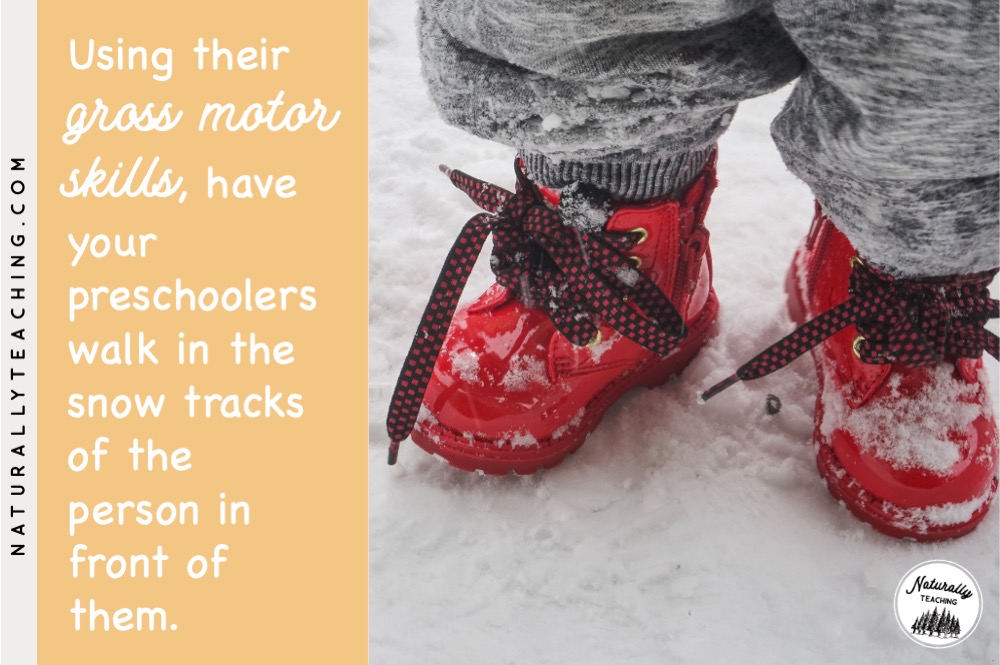
After you have read aloud The Snowy Day, go back to pages 12 and 13 where Peter drags his feet and a stick to make new tracks. Show the illustrations to your students and point out the lines that were made by Peter’s feet and then the stick. Get your preschoolers bundled up in their outdoor gear and go outside to draw in the snow with sticks. Remind your students that the sticks are going to be their drawing utensils for the day and should only be used to draw in the snow. You could have them work on drawing letters, numbers, shapes, or pictures in the snow. Once everyone has had a chance to draw, consider a gallery walk to let each student walk around and see their classmates’ artwork.
Click here to jump ahead to The Snowy Day art activities!
One of the most effective ways to use a picture book in the classroom is to connect it to multiple subjects, tied to the standards. The Snowy Day activities for kindergarten section includes an activity idea for reading, writing, and science. Reading, writing, and science are inexplicably linked, and when you integrate them together in your own classroom, can help you save time in your very busy schedule.
After you have read aloud The Snowy Day Ezra Jack Keats, reread it together as a class. Tell your students that they are going to be looking for the characters, the setting, and key details that will help them retell the story to a partner or to an adult when they get home. While reading the story you can ask your students questions like, “who is this book mostly about?” “Where does this story take place?” “How do the pictures help tell the story?”
After rereading the story, encourage your students to draw the main character and the setting on a piece of paper. Assess their writing abilities, and appropriately challenge them to retell what happened in the story with words or sentences.
After reading aloud The Snowy Day, encourage your students to form an opinion about snow. Do they like it? Do they think it’s messy? Remind your students that an opinion is what someone thinks about something and that it’s okay if their opinion is different than a friend’s. When they form an opinion they should have reasons for their opinion. Encourage your students to use an example from the book or from their life experiences to help support their opinion.
Hold a class discussion about Peter and his journey walking around his neighborhood in the snow. Together as a class you’re going to be looking for how deep or shallow the snow looks in the illustrations. In some pictures the snow looks shallow, like when Peter’s feet sinking only a small amount. In other pictures, the snow looks deep, like when he slides down the large hill of snow.
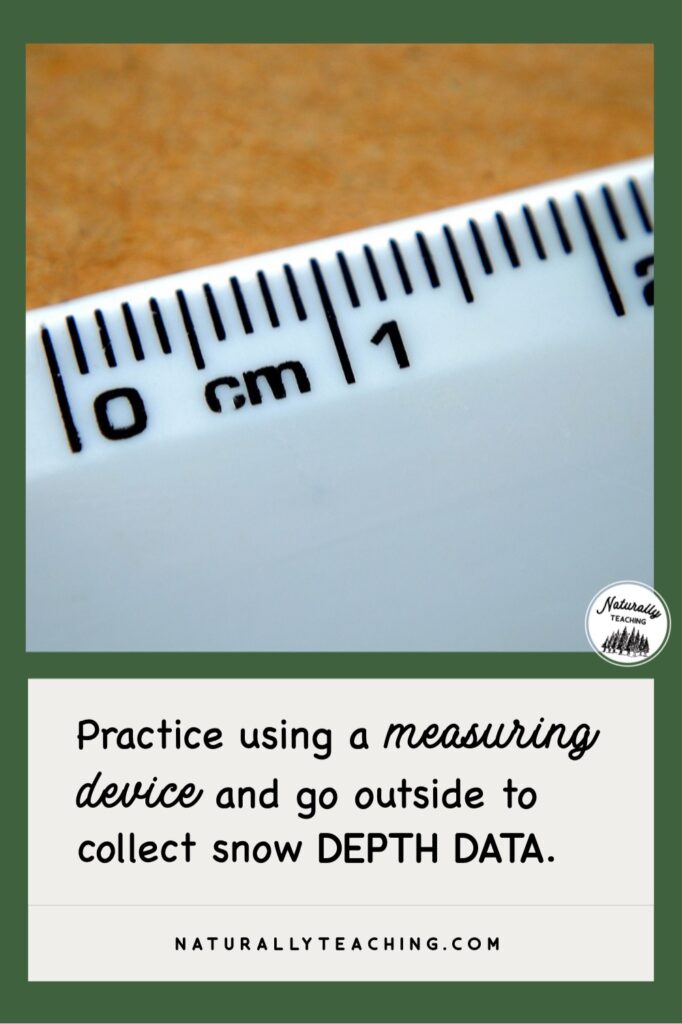
Talk about your school yard and where they think there might be deep snow and shallow snow. Practice using a measuring device and go outside to collect snow depth data. Try three different locations including the sidewalk, the grass, and the playground. You can have each student take a measurement at each location and then talk about which area had the deepest snow and the shallowest snow. Why do they think this is so? If they are unsure, revisit the locations you took snow depth measurements and look around the area. Are there trees that caught the snow, keeping it from collecting on the ground? Is there a roof hanging over top of the space? Did the playground equipment keep the snow from getting to the ground?
Click here to jump ahead to The Snowy Day art activities!
First graders get similar benefits to kindergarteners when they use literature to enhance their reading, writing, and science skills. The Snowy Day activities for 1st grade section includes reading and writing activities tied to the ELA Common Core State Standards and a science observation tied to the Next Generation Science Standards.
After you have read aloud The Snowy Day Ezra Jack Keats, reread it together as a class. Tell your students that they are going to be listening for words that sound like feelings or words that sound like sounds. When you’re rereading a page, encourage your students to put a finger on their nose when they hear one of these words. After you finish the page, have your students volunteer to share the word that they heard that suggests a feeling or sounds like a sound.
Some examples of these words include:
After you have read aloud The Snowy Day, brainstorm with your class a list of activities that Peter did while outside in the snow (e.g. made tracks, built a snowman, made snow angels, etc.). Encourage your students to think about a time that they did one of these activities and then write a narrative about their experience. Remind them to think about the order of events and use words like “first”, “next”, and “then” while they write their sentences. Also encourage them to add details and words that give feeling or sound to their story to make it more interesting.
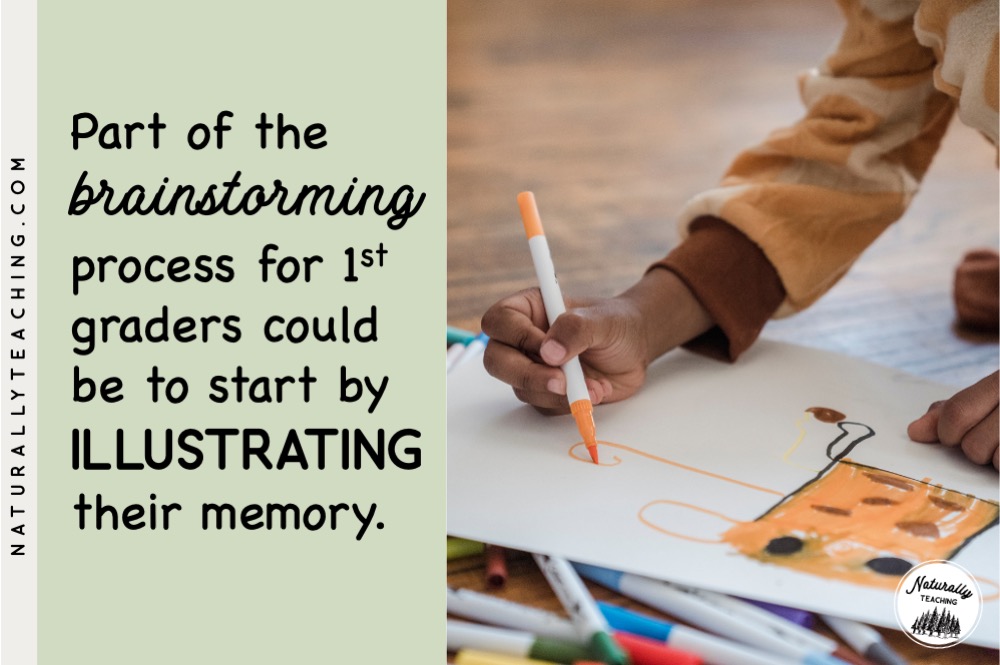
Part of the brainstorming process for 1st graders could be illustrating their memory. If you have them start with their drawing, they can more easily work through the sequence of events as they put together their picture. This technique will give them a better chance at success when they get to the writing part of the assignment.
Flip through the pictures of the book with your class and take a look at the sky. Throughout the story, Keats shows different shades of blue to represent the different times of the day that Peter is exploring the snow. When Peter goes inside, there are no windows pictured to see what is happening with the sky. Hypothesize with your students what they think the sky looked like when Peter was inside getting ready for bed.
Look for different shades of blue in the sky with your class the following day at school. At different intervals during the day, take a look out of a window and see what color blue the sky looks like. Does it match any of the blues that Keats used in The Snowy Day? What is going on with the sun at that time? What does this tell them about the time of day that Peter was outside? Look for patterns in the sun with your students in relation to the story.
Click here to jump ahead to The Snowy Day art activities!
Second graders are toward the tail end of early childhood but still benefit from similar teaching techniques used for kindergarteners and first graders. The Snowy Day activities for 2nd grade section includes activities tied to the ELA Common Core State Standards for reading and writing and the Next Generation Science Standards for a science experiment.
After you have read aloud The Snowy Day Ezra Jack Keats, reread it together as a class. Tell them that they are going to be story sleuths looking for the clues sprinkled throughout the storyline. Give them a piece of paper, clipboard, and pencil to act as their detective’s notebook and have them write down the words “who”, “what”, “where”, “when”, “why”, and “how” to take notes while you reread the story aloud.
After they have taken their notes, come together as a class and put all the “clues” together to make a collective clue list. You could have them put together a “report” in small groups or you could make a master list for the entire class. When your students have conversations with other students, clues that they overlooked will be brought to their attention helping them finesse their observational skills.
After you have read aloud The Snowy Day, revisit the page spread that shows Peter walking by the snowball fight. Ask your students if they agree or disagree with Peter that he was too young to join in the snowball fight. Remind them that this is an opinion writing so their answer can differ from a friend’s answer and that’s okay. They should use their own experiences and information from the text and illustrations from the book to support their opinion.
Assess their writing abilities and consider putting a list of linking words on a document camera or on the whiteboard. If you provide them with a list of linking words, they can feel more confident that they are using the right kind of words which will in turn allow you to assess their ability to use the words correctly.
After you have read aloud The Snowy Day, ask your students if they think snow is a solid or a liquid. There will likely be a split with some students thinking it’s a solid while others might think that it’s a liquid. Regardless of the answers, there is a two-step exercise that they can complete to deduce what the answer is.
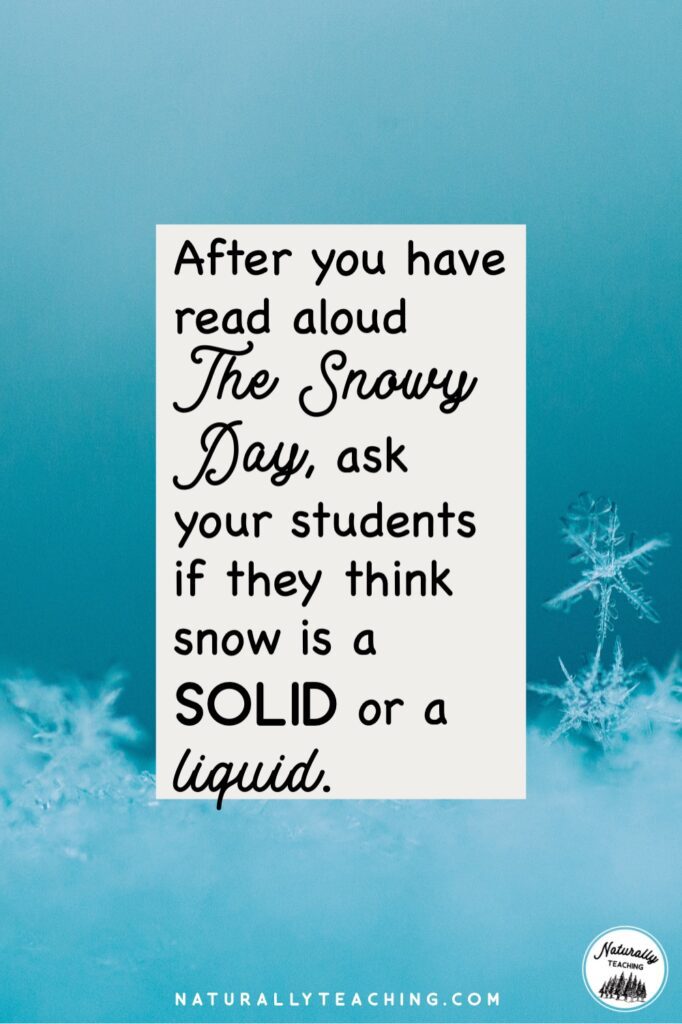
Start your lesson with an experiment to see how liquid water reacts to being put in different shaped and sized containers. The materials you need to make this experiment work are: buckets of water, different sized and shaped containers, and solid objects (e.g. rocks, ice cubes, sticks, blocks, etc.) Encourage your students to dump the liquid water into the different containers and observe what it does. This activity will give your students the background knowledge that liquids will change shape to whatever container they are in. To help them see how solids react, you could supply them with a bunch of ice cubes (or other solid things from around your classroom), and have them put them in different containers. Through this verification process, they will be able to see that solids do not change their shape no matter which container they put them in.
Once they have this background information, they could catch snowflakes on black construction paper or black felt and investigate their shape through a magnifying glass. They will notice that there is a structure to it and deduce that it must be a solid since liquid would flatten out on the surface of the material.
The Snowy Day art activities can take many forms. These three ideas are based on art styles and less on crafts. If you are looking for crafts, consider using Pinterest to search for different ideas.
Ezra Jack Keats used a style of art called collage art to illustrate the book The Snowy Day. His collages were a compilation of fabrics, paint, and paper. Look closely with your students at the illustrations, searching for shapes that look like they were cut out of paper and glued to the page. This is how Keats put his illustrations together.
Have your students grab the writing they completed inspired by The Snowy Day, and encourage them to create a collage illustration for that writing. Provide them with construction paper, scrapbook or patterned paper, magazines, glue, and scissors to put together this collage illustration. They might want to use a pencil to outline the shape they want before they cut it out. After they have completed their illustration, have them place it with their story and have a gallery walk. This will give everyone a chance to see their classmates’ hard work.
Ezra Jack Keats also used paint and stamping on top of his collages to give depth and perspective. Provide your students with watercolor paints to paint a wintery scene. You can project illustrations from The Snowy Day onto your classroom screen to give examples of how Keats used shading to make snow look like it had shape and depth. Your students will also be able to see that Keats did a lot of blending with his colors and they can give that a try in their art piece. These would make a colorful display to put in the hallway outside of your classroom.
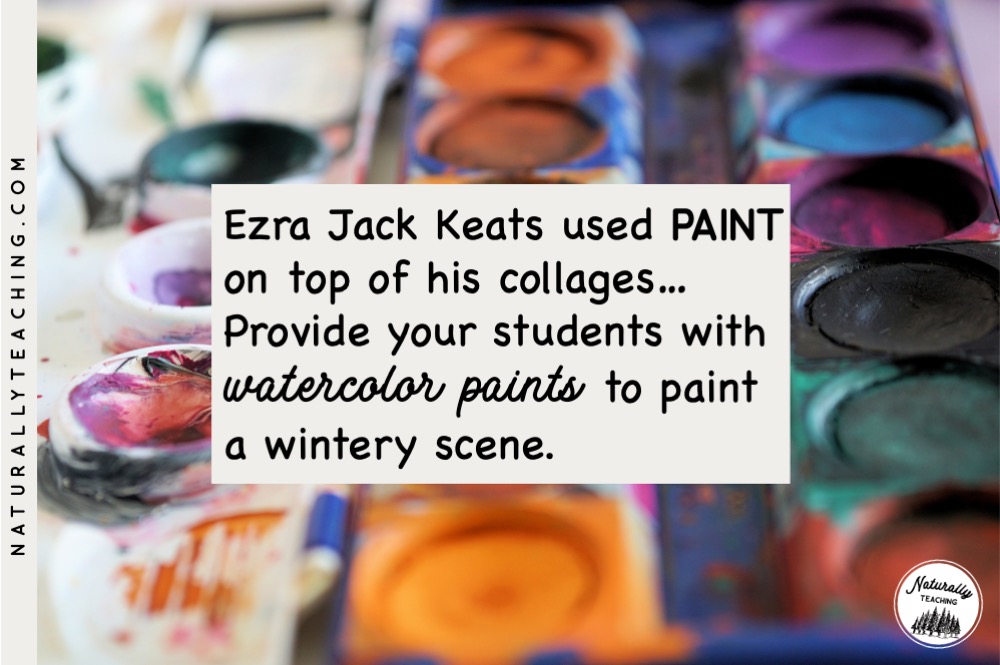
Many of Keats’ illustrations showed Peter in his bright red snowsuit against the white snow. This contrast of colors is exciting and makes the subject of the picture, Peter, really stand out. There are a couple of pages where the background is dark and the snow is the star of the page. Encourage your students to create a contrast-inspired winter scene where the colors they choose make whatever their subject is shine. After these are completed, you could display them on a bulletin board inside or outside your classroom.
The Snowy Day Ezra Jack Keats will bring lots of joy and learning to your classroom this winter! Whether you use one of these 15 activities for early childhood learners, modify one to meet your needs, or come up with one on your own, your students will benefit greatly from your time and effort. Remember that reading, writing, and science are inexplicably linked, and when you integrate them together in your own classroom, it can help save time in your very busy schedule.
If you love the suggestions in The Snowy Day activities for kindergarten section, but don’t feel like you have the time to develop materials on your own, check out the Snow and Winter Weather Mini Unit for Kindergarten with pre-made worksheets, lesson plans, background information, and an answer key. Also, if you need some more inspiration for teaching about snow, check out “The Helpful Guide to Teaching the Season Transition to Winter”.
Works Cited
Basil, A. (n.d). The Impact of “The Snowy Day”. Retrieved from http://www.judynewmanatscholastic.com/blog/2019/12/author-ezra-jack-keats-snowy-day/
Pinkney, A.D. (2021, December 17). Ezra Jack Keats’s Snowy Day Legacy. Retrieved from https://www.houstongrandopera.org/blog/posts/2021/december/ezra-jack-keats-s-snowy-day-legacy/
Do you have an amazing activity that you do alongside The Snowy Day Ezra Jack Keats? Describe it in the comments section to help out a fellow early childhood teacher!
Check out this podcast episode for unique ways to teach with books!
2 thoughts on “The Snowy Day Ezra Jack Keats: 15 Fun Activities for Early Childhood Learners”